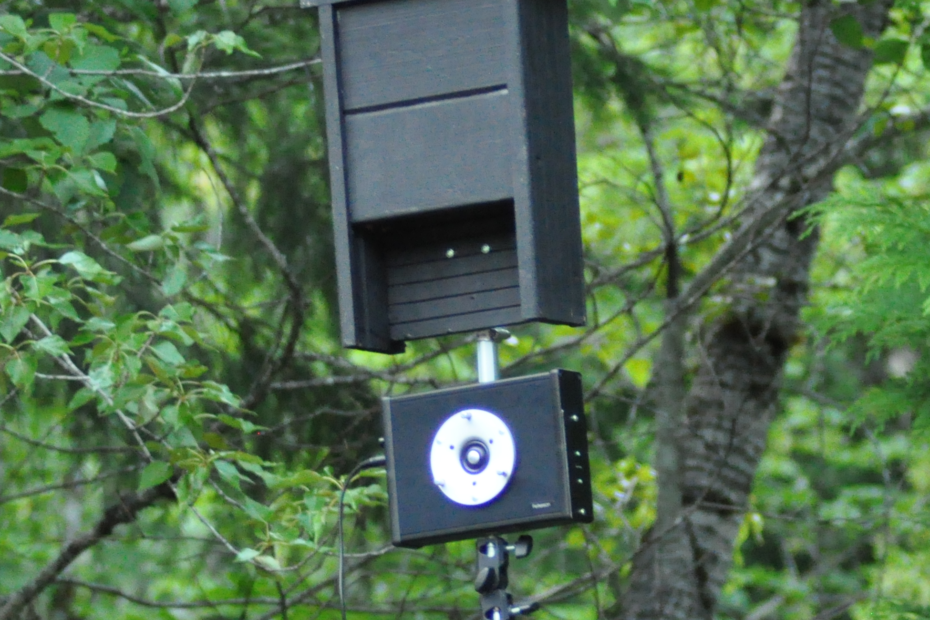As the summer slowly starts to creep our way, that means time to get out and collect some data to answer my question: Do bats use social calls to attract each other to roost sites? I will be testing this in three different locations, using a small wooden bat box, an infrared camera and an ultrasound loudspeaker. After installing the bat box, I will monitor nightly bat activity using both a bat detector and infrared video for two consecutive nights. After these initial “control” nights, I will broadcast different bat calls from the box: Yuma Myotis echolocation call, Yuma Myotis social call and Mexican Free-Tailed Bat echolocation call. I hypothesize that my bats will be most attracted to the calls (echolocation and social) of their own species, or conspecifics. Following these three playback nights, which will be monitored using infrared video to determine behavioral responses, I will again monitor nightly bat activity for two nights. This will allow me to test if bats are more attracted to a box in the nights following these acoustic cues. Bats have good memories, and are generally pretty curious, so I predict that activity around the box will be slightly higher immediately after playback nights.



So practically, what does this all mean? For approximately 6 weeks this summer, I will be living on Ramen and sleeping in a tent, lulled to sleep by the sound of various rivers. I have selected three different field sites, and will be visiting each field site twice. Each visit will last a week, the length of my data collection. Sites were selected based on the presence of a focal roost. The presence of a known roost, where I can estimate the local population of my target species (Yuma Myotis), guarantees that there will always be a stable level of bat activity. This little bit of knowledge means that if I don’t get a response to my playbacks, I can be fairly confident that it is because bats are not interested in the calls, NOT because there are no bats to hear the playbacks. When scientists test a specific hypothesis, we want to keep as many variables constant as possible. This is so that we can say with confidence if a particular outcome occurred because what we did (such as playing bat sounds), and not because of some random, unmeasured variables (area of low bat activity).

Lucky for me, the field sites I chose are beautiful places, with picturesque rivers, hills and a variety of plant and animal life. Each week, I’ll bring you my notes from the field, chronicling the ups and downs of field research.
